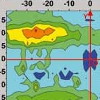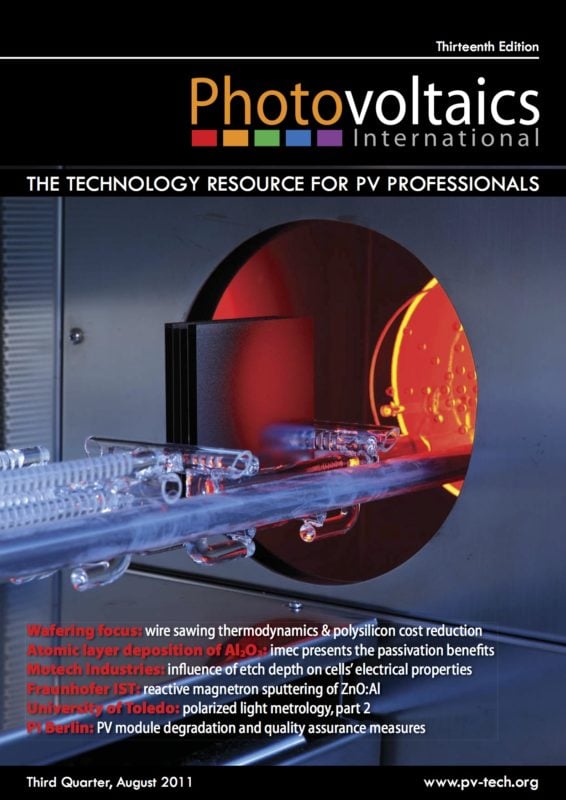By Robert W. Collins, Center for Photovoltaics Innovation & Commercialization and Department of Physics & Astronomy, University of Toledo; Nikolas J. Podraza, Center for Photovoltaics Innovation & Commercialization and Department of Physics & Astronomy, University of Toledo; Lila R. Dahal, Center for Photovoltaics Innovation & Commercialization and Department of Physics & Astronomy, University of Toledo; Kenneth R. Kormanyos, President & Senior Research Fellow , Calyxo USA; Sylvain Marsillac, Department of Electrical & Computer Engineering, Old Dominion University
In situ, real-time and off-line polarization spectroscopies have been applied in studies of large-area spatial uniformity of the components of multilayer stacks in hydrogenated silicon (Si:H) and cadmium telluride (CdTe) thin-film photovoltaic (PV) technologies. Such reflection spectroscopies involve first the measurement of spectra in the reflected-to-incident polarization state ratio of the light wave (or the ellipsometry angles of the reflecting multilayer stack), and then the analysis of these spectra to determine the thicknesses and properties of component layers of the stack. In addition, expanded capabilities result from measurement/analysis of the irradiance ratio and the degree of polarization of the reflected beam, simultaneously with the polarization state ratio, particularly for rough surfaces with in-plane roughness scales of the order of the optical wavelength or greater that scatter and depolarize the light beam. This paper provides examples of 1) real-time monitoring of texture etching of the transparent conducting oxide ZnO:Al; 2) real-time monitoring and off-line mapping of roll-to-roll deposited hydrogenated amorphous silicon (a-Si:H); and 3) large-area mapping of coated glass panels used in low-cost CdTe PV technology. For a-Si:H and CdTe thin-film PV technologies, the focus is on the characterization of the window layers, which are p-type protocrystalline Si:H and n-type cadmium sulphide (CdS), respectively. Analysis of the thickness, phase and structure of the window layer material over the area of the PV panel is critical in order to design processes for uniformity of high performance. Descriptions are given of future directions in novel instrumentation development that will enable mapping for uniformity evaluation at the high speeds required for on-line analysis.



